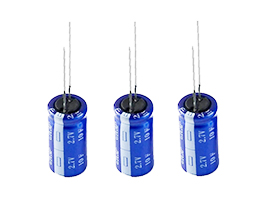Consulting phone:
135-3037-2041
(Mr.Wang)
Capacitors are constructed with plates at both ends and an insulating dielectric (including air) in the center. When energized, the plates are charged to form a voltage (potential difference), but because of the insulating material in the center, the entire capacitor is non-conductive. However, such a situation is under the condition that the critical voltage (breakdown voltage) of the capacitor is not exceeded. We know that any substance is relatively insulating. When the voltage across the substance increases to a certain extent, the substance can conduct electricity. We call this voltage the breakdown voltage. Capacitors are no exception. After a capacitor is broken down, it is not an insulator.

However, in the middle school stage, such a voltage cannot be seen in the circuit, so it is all operated below the breakdown voltage and can be regarded as an insulator. However, in an AC circuit, because the direction of the current changes with time as a certain function. The process of charging and discharging the capacitor has time. At this time, a changing electric field is formed between the plates, and this electric field is also a function of changing with time. In effect, current flows between capacitors by way of a field.